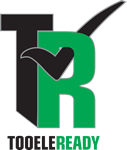Ready Neighborhood
Neighbors Helping Neighbors
We invite you to meet with your neighbors to discuss these steps and follow them together. Making plans as neighbors allows help to be available immediately when the Professional First Responders are unable to come because EVERYONE needs help and they are taking care of other larger issues. Help will most likely come from neighbors who will need to rely on each other and rely on resources within the neighborhood.
Check out www.nhnpreparedness.com to learn how you can help your neighborhood by participating the block captain neighborhood communication program.
Being involved with your neighbors and neighborhood will ultimately help the recovery process for you and your family happen more quickly. This section developed by Neighbors Helping Neighbors, is a simple, quick glance preparedness plan based on what you need one month at a time. This plan will get you on your way to preparing for the unexpected and to be able to help your neighborhood family. Disasters don’t end in an instant so it is important to think about long term recovery and what that means for your neighborhood and community.
Month 1: Family Emergency Plan
Month 2: First Three Minutes
Month 3: First Three Hours
Month 4: First Three Days
Month 5: First Three Weeks
Month 6: First 3 Months
Month 1: Family Emergency Plan
Your family may not be together when disaster strikes, so it is important to plan in advance. Ask these questions: How will you contact on another? How will you get back together? What should we do in different situations?
It is suggested that each family designate a person in another state as an emergency contact for all family members. Also exchange cellular, work, and home phone numbers, know the names and needs of each family member, and include pets. Also, be aware of neighbor’s special needs or medical requirements. Keep this information readily accessible, such as posting inside a pantry door or with your GO kit.
Where feasible, purchase battery operated family service radios and learn how to communicate with your neighbors.
Month 2: First Three Minutes
3-minute kits attached to each bed in the house filled with sturdy shoes, flashlight, sturdy gloves, whistle, and lightweight clothes will enable persons to walk across the floor with light in case there is debris and power is out.
Month 3: First Three Hours
The first three hours after a disaster are an important time to take stock of your situation. You might need to help a family member or neighbor who is injured. The most important item may be a well-stocked first-aid kit. Make sure you have adequate supplies, medications, and personal needs for each family member. Remember prescription medications! An AM/FM radio to listen for information from public safety agencies, supplies for needed rescue, and a binder with important documents should be accessed. Make sure you have extra batteries or a radio that runs off solar or a hand-cranked dynamo.
Month 4: First Three Days
If a disaster is large enough, it may cause interruption to community services over several days. Planning for the next three days will require you to organize food and water for family members. Here are some items you might need. Prepare a “72-hour kit” for each family member. Keep it packed and ready to “grab-and-go” at any time, in case you need to leave suddenly. Include water (at least 1 gallon per person per day), easy-to-prepare food items, clothing, shoes, first aid supplies, medications (including prescriptions), personal hygiene items, water filters or purification tablets, shelter and survival supplies, and cash in small denominations. Place these kits in an easily-accessible location in your home and show family members where they are stored.
Month 5: First Three Weeks
A major disaster may cause disruption of services like stores and utilities over an extended time. It’s time to prepare for the first three weeks. Don’t worry, it’s not as overwhelming as it might sound.
In addition to the supplies you’ve put away for the first three days, continue adding enough water, food, and personal items to last three weeks. The simplest way to accomplish this preparation is over time. Each time you go shopping, purchase a little extra of the same food and personal items you normally buy. For water storage, consider some larger containers, like 5-, 15-, 30-, or even 55-gallon water storage barrels. Also consider other cooking methods and power and fuel options that you will be able to use if the disruptions lasts longer than you think it might.
Month 6: First Three Months
Our next preparation time-period is the most daunting – three months. Hopefully, none of us will ever experience a post-disaster period where we need to rely on our own supplies for three months, but it could happen. Examples are a job loss, health problems, or loss of a family member. Never does anyone want this to happen, but if it does and you are adequately prepared the event won’t feel as stressful because you will have prepared in advance to take care of your family needs.
Continue to build up an adequate supply of food that is part of your normal, daily diet. Work toward storing enough to feed every family member for three months. Include a combination of basic food-storage staples (like flour, beans, and rice) as well as everyday food that is easily prepared. Build this supply up gradually, and you won’t be overwhelmed by the task.
Other Links for Neighborhood Preparedness:
5 Steps to Neighborhood preparedness from Los Angeles Emergency Management

